#codeless automation
Explore tagged Tumblr posts
Text
Common Pitfalls in App Test Automation and How to Avoid Them
App test automation can unlock faster releases and better quality—but only if done right. Many teams jump in with good intentions, only to hit common pitfalls that slow progress or waste resources. This blog highlights frequent mistakes and how to sidestep them.
Automating Everything:
Not all tests need automation. Trying to automate UI-heavy or rarely-used scenarios can increase maintenance. Focus on high-value, repeatable tests like regressions and smoke tests.
Poor Tool Selection:
Choosing a tool that doesn’t align with your app’s platform, tech stack, or team skills leads to frustration. Evaluate tools based on compatibility, learning curve, and integration capabilities.
Lack of Test Design Strategy:
Writing flaky, unstructured tests results in unreliable outcomes. Implement a solid test design pattern (e.g., Page Object Model) and follow naming conventions.
Ignoring Maintenance:
Automated tests need regular updates. If ignored, they become outdated and produce false positives or failures.
Skipping CI/CD Integration:
Running tests manually defeats the purpose. Integrate automation into your CI/CD pipeline to ensure continuous, consistent testing.
By avoiding these pitfalls, teams can create a sustainable and scalable automation strategy that supports rapid, high-quality app development.
#app test automation#end to end testing#api automation testing tools#automated web testing#qa automation testing#ai automation testing#codeless automation
0 notes
Text
Automation Testing Insights: Transforming Testing
The global automation testing market size is expected to reach USD 92.45 billion by 2030. Prominent technological advancement in artificial intelligence (AI) and machine learning (ML) is propelling the demand for the market. Mobile application usage is growing across various end-user industries, and smartphone penetration is rising, opening an attractive potential for market expansion. Furthermore, there is a rising demand for automation testing as web-based applications have developed significantly and new software technologies have emerged. The market is growing rapidly due to the increasing usage of ML and AI for advanced analytics and continuous testing across DevOps and DevSecOps areas.
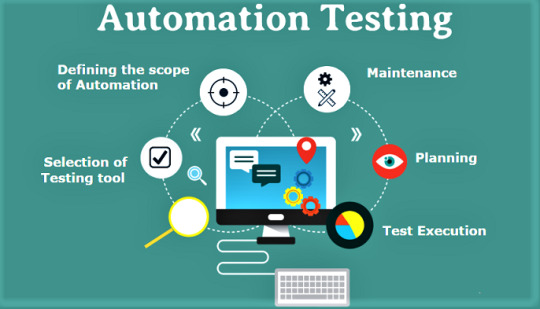
Automation Testing Market Report Highlights
The services segment dominated the market and accounted for over 56% of the global revenue owing to rapid advancements in implementation services, which make it easier to include automation into a functioning infrastructure for software testing
With the aid of this service, automation is integrated into an existing software automation testing setup
The large enterprises segment held the largest revenue share in 2022 as it helps improve efficiency, reduce manual effort, increase test coverage, and ensure the quality of software applications
The BFSI segment is estimated to have significant growth over the forecast period; adopting digitalization in the BFSI sector creates a significant demand for application software automation testing
Gain deeper insights on the market and receive your free copy with TOC now @: Automation Testing Market Report
The emerging use of RPA to automate time-consuming, error-prone manual processes are just a few instances of the usage of AI & ML in automation testing. Moreover, a bot uses the page’s numerous links and web forms to systematically explore through an online application when web crawling or spidering. This is a new use for AI and ML in automation testing. This approach is typically used for indexing online browsing. It may be improved further to perform reverse engineering on an application being tested and automatically find Test Cases. Emerging automation testing tools are significantly fueling market growth.
For instance, Testcraft, a codeless Selenium test automation platform for regression and continuous testing, as well as monitoring of web applications, is gaining traction among users. Their revolutionary AI tech removes maintenance time and cost, as it certainly affects changes in the app. Similarly, Applitools Eyes, Testim, and Test.ai are more automation testing tools propelling the market growth. Furthermore, mergers and acquisitions by other key players are propelling market growth. For instance, in 2022, to improve the user experience on 5G smartphones, Key sight introduced AI-driven and automated testing. Automation and AI enable mobile service providers and app developers to more swiftly evaluate how smartphone users engage with native apps in the real world.
#Automation Testing#Quality Assurance#Software Testing#Test Automation#Continuous Testing#Test Automation Framework#DevOps Testing#Selenium#Test Automation Tools#Performance Testing#Regression Testing#Agile Testing#UIAutomation#Test Scripting#Test Automation Engineer#Codeless Automation#Automation Strategy#CI/CDTesting#Test Automation Best Practices
0 notes
Text
What is Codeless Automation and How its work?

As software development cycles grow faster and more continuous, testing needs to move at the same velocity. Traditional automation—powerful though it is—can become a bottleneck when only a small group of engineers can write and maintain test scripts. Enter codeless test automation, a modern answer to the challenge of scaling quality across teams without requiring everyone to write code.
But codeless is more than just a buzzword—done right, it’s a collaborative, intelligent, and scalable testing methodology that’s redefining how organizations approach QA.
What Is Codeless Test Automation?
Codeless test automation refers to the use of platforms and tools that allow testers to create, execute, and maintain automated tests without writing traditional programming code. Instead of scripting in languages like Java or Python, testers interact with:
Drag-and-drop interfaces
Pre-built test blocks or visual workflows
Natural language inputs or behavior-driven design formats (like Gherkin)
These tools abstract the code behind the scenes, allowing both technical and non-technical team members to contribute to the automation process.
Low-Code vs. No-Code vs. Codeless Automation: Understanding the Differences
Although often used interchangeably, these terms are not the same:
Low-Code Automation provides a blend—it offers visual interfaces but also allows code injections for complex conditions. Perfect for semi-technical testers who want both control and ease.
No-Code Automation eliminates code entirely. It's built for business users and testers with no programming background. Simplicity is the goal—but often at the cost of flexibility.
Codeless Automation, as a broader term, may incorporate both low-code and no-code options. It focuses on abstracting complexity while still offering enough control for power users when needed.
Read also: Best Automation Testing Tools
How Does Codeless Testing Work?
Let’s walk through how a modern codeless automation platform functions:
1. Test Creation
You begin by interacting with the application under test (AUT)—clicking, typing, or performing other actions. The tool records these actions and translates them into a structured test case. Some platforms also allow building tests visually—connecting steps like flowchart blocks or writing plain English test scenarios.
2. Object Recognition
Modern tools use AI-powered selectors or smart locators that adapt when UI elements change. This is crucial because flaky tests are often caused by fragile selectors.
3. Test Data Integration
Need to run the same test for different user types or datasets? Codeless tools can link to spreadsheets, databases, or data generators—without scripting loops or variables.
4. Execution & Scheduling
Tests can be executed locally, on the cloud, or across real devices and browsers. You can schedule them daily or hook them into CI/CD tools like Jenkins, GitHub Actions, or Azure DevOps.
5. Reporting & Analysis
Post-execution, you get visual dashboards, logs, screenshots, and detailed analytics. Some tools even auto-file bugs in Jira when a test fails.
Which Tests Are Best Suited for Codeless Automation?
Not every test type fits codeless automation. It shines in areas like:
• UI Regression Tests
When your product UI evolves frequently, regression test coverage can grow exponentially. Codeless tools make it easier to keep up without burning out your dev team.
• Smoke Tests
Want to validate login, dashboard loading, or payment gateway availability with every build? Codeless tools help you get quick feedback without writing dozens of scripts.
• End-to-End User Journeys
For tests that simulate real-world user paths—like signing up, purchasing a product, and logging out—codeless testing maps these flows efficiently and understandably.
• Cross-Browser / Device Testing
Codeless platforms often integrate with device farms (like BrowserStack or Sauce Labs), letting you run the same test across multiple environments without duplication.
When Not to Use Codeless Automation
Despite its power, codeless isn’t a silver bullet.
Highly complex workflows involving encrypted data, chained APIs, or backend validations still need traditional scripting.
Performance testing, load testing, and deep service-layer tests are beyond the reach of most codeless tools.
If your team needs 100% control over logic, libraries, and exceptions, coded automation is still king.
Final Thoughts
Codeless automation is about making test automation accessible, collaborative, and scalable. It’s not about replacing developers—it's about enabling QA teams to move faster and contribute earlier.
When adopted strategically, codeless testing can reduce time-to-market, increase test coverage, and empower entire teams to contribute to quality.
Want to Get Started With Codeless Automation?
At Testrig Technologies, As a leading Automation Testing Company, we specialize in integrating codeless tools into robust testing ecosystems—balancing ease with enterprise-grade power.
📩 Reach out for a free strategy session, and let’s build a smarter, faster, more inclusive QA process—together.
#automation testing company#codeless automation testing#low code automation testing#qa testing company
0 notes
Text
With the growing complexities of software applications, the need for no-code test automation
has risen significantly. Additionally, the dynamic consumer demands make it crucial for app
developing brands to deliver exceptional user experiences to ensure good customer loyalty and
brand reputation. Of the major automation tools, several enterprises choose Appium as their
primary for their mobile app automation owing to multiple competitive advantages. It's open
source and cost-effective, which helps not only large enterprises but also growing businesses
adopt this tool. However, gaining expertise in using the tool is often time-consuming and
complex. Codeless or no-code automation testing tools without coding has emerged as a
game-changing approach that addresses this challenge.
This article is originally published by
0 notes
Text
The Power of Low Code/No Code Test Automation

If you have been reading my blogs and bytes of wisdom, which I occasionally post on LinkedIn, you would know how much I enjoy using a good analogy. So here we go — in Greek, today.
In the epic quest of software development, the teams navigate treacherous terrain riddled with unknown, and sometimes known, bugs and errors. With Test Automation as their trusted ally, they brave the coding complexities to ensure the quality of their products.
But are they making the right choices?
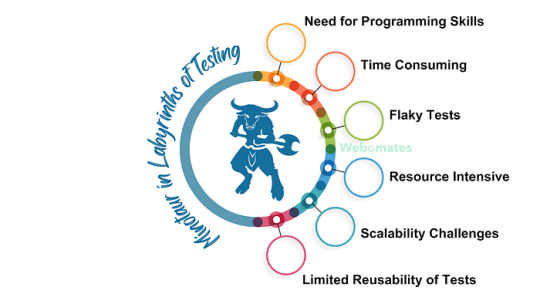
1. Need for Programming Skills: Open source platforms demand a higher level of programming proficiency.
2. Time-Consuming: Creating and maintaining tests can be time-consuming, especially for complex applications undergoing frequent changes.
3. Flaky Tests: Instabilities in tests due to synchronization issues, dynamic content, or environmental variations.
4. Resource Intensive: Dedicated resources may be needed for script development, leading to higher costs.
5. Scalability Challenges: Scaling test automation with open source tools becomes challenging as application functionalities increase in complexity.
6. Limited Reusability of Tests: Test scripts in open-source tools may lack reusability.
To overcome these challenges, the shift to Low-Code/No-Code (LCNC) platforms proves to be the right choice.
Implementing LCNC technologies can revolutionize work processes, automating tedious tasks and allowing teams to focus on strategic, high-value work. According to McKinsey, “There’s expected to be a 70% growth in the adoption of low-code/no-code by 2025”.
Let’s see what power these platforms hold to help you navigate the challenges faced during software development and testing.
Power of Low-Code/ No-Code Platforms
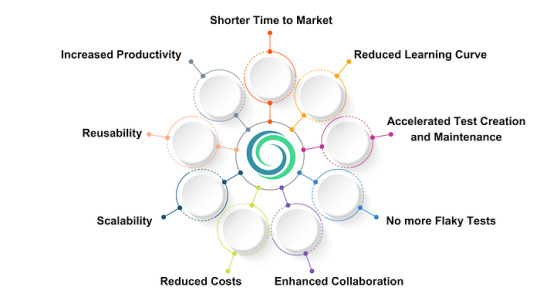
1. Shorter Time to Market: Code templates and pre-built features reduce development time, resulting in a quicker time to market.
2. Reduced Learning Curve: Minimal coding experience is required, enabling easy use of visual interfaces and pre-built components.
3. Accelerated Test Creation and Maintenance: Drag-and-drop functionality and reusable components speed up the test creation and maintenance process.
4. No more Flaky Tests: LCNC platforms minimize reliance on intricate coding, addressing issues related to dynamic elements and reducing flaky tests.
5. Enhanced Collaboration: Encourages collaboration between business analysts and testers, making development and testing cycles more agile.
6. Reduced Costs: Less dependency on developers for UI tests, allowing testers to contribute to automation and reducing associated costs.
7. Scalability: Handles complex test scenarios and scales according to changing testing process needs.
8. Increased Productivity: Developers can focus on more critical business problems instead of spending hours coding.
9. Reusability: Emphasizes modular designs, allowing for the creation of reusable components and test flows.
The power of LCNC platforms is nothing short of a divine revelation. Businesses are harnessing the power of these platforms to elevate their testing rituals and hasten the delivery of their digital progeny. Yet, in this quest for excellence, it is prudent to acknowledge that specialized guardians are still needed to navigate the labyrinths of software development and perform feats beyond the reach of automated tools.
Much like Athena, the goddess of wisdom, Webomates CQ provides codeless test automation services, seamlessly integrating with various automation frameworks. It bestows the ability to modify test cases effortlessly, ensuring a harmonious coexistence between mortal testers and the divine automation realm.
If you want to discover how codeless testing can help you in achieving excellence, reach out to us at [email protected].
You can read the full blog here
0 notes
Text
Scriptless Test Automation Tools | FireFlink
FireFlink- A scriptless, high-speed automation testing tool with the FireFlink Platform, Cloud, Crowd, & Assets for all of your testing needs. Book a FREE demo!
Visit Website: Scriptless Test Automation Tools
0 notes
Text

Embracing codeless test automation represents the forefront of testing innovation. Whether you are well-versed in codeless testing or just embarking on this journey, explore our offerings.
Our cloud-based codeless platforms empower enterprises to address critical needs related to scalability, speed, collaboration, quality, and security, thereby gaining a competitive edge.
#automation#testautomation#softwaretesting#security#testing#sailotech#lowcodenocode#codeless#processautomation
0 notes
Text

Helo!
I'm back with something else once more but recently I've talked to a college professor of mine and they gave me some good insights on "project management" as in projects in general
So I now have a pretty interesting idea (I hope) for a mix of survival (somewhat, this genre is a bit weird), roguelite, automation and card game!
And the big thing now is I'll be changing how I approach my projects by trying to plan ahead as much as I can and because of that, placing much clearer goals and deadlines
This weekend I've been organizing design stuff and code organization so here ya go:
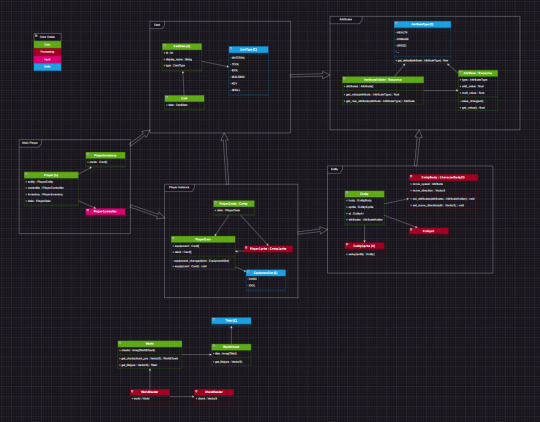
Not to be confused with unreal blueprints or some codeless coding tool, this is pure diagraming
Now, I haven't actually taken the class on UML stuff (I probably should already have though...) but I have an idea of how it works from work experience and friends so I'm just using that to build my systems maybe not perfectly but I'm discovering how I like to organize stuff as I go
Also I developed a bit of the art as you saw on top of the post because I like conceptualizing the style so I can better imagine how it will turn out in my head
11 notes
·
View notes
Text
Best Practices for Successful Automation Testing Implementation

Automation testing is an essential part of modern-day software development that accelerates delivery, reduces manual work, and improves software quality. But success in automation testing is not assured, it should be achieved by proper planning and execution along with proper compliance of best practices.
In this blog, we will talk about key actionable strategies and best practices to ensure the successful implementation of automation testing in your projects.
1. Start with a Clear Strategy
Jumping straight into automation testing without a clear strategy will not always yield the desired results. Define the following:
Objectives: Define the goals of the automation, whether it is about shorter test cycles, improved test coverage or eliminating human error.
Scope: Set the areas of your application for automation and focus much on areas that have a high impact like regression and functional testing.
Stakeholders: Get early involvement from the development, QA and product teams to avoid misalignment regarding expectations.
A well-formed strategy helps guide the way and make sure everyone involved is aligned.
2. Prioritize the Right Test Cases for Automation
One of automation testing’s biggest mistakes with it is to use automation for everything. Rather than that, shape your test cases to that of:
Are monotonous and time-consuming.
Wherein critical for application functionality
Have stable requirements.
Some of these tests are regression tests, smoke tests, data-driven tests, etc. Do not automate the exploratory or highly dynamic tests that often get changed.
3. Choose the Right Automation Tools
The effectiveness of your automation testing initiative highly relies on appropriate tools selection. Look for tools that:
Support the technology stack of your application (e.g., web, mobile, APIs).
Give the flexibility to expand your project.
Offer extensive reporting, reusability of scripts, and run across browsers.
GhostQA is one example of a codeless platform that works well for teams across the skill set. GhostQA can let you focus on what matters and Auto Healing reduces your maintenance to enforce.
4. Build a Strong Automation Framework
An automation framework is the backbone of your automation testing process. It helps in standardization, reusability and scalability of test scripts. So, when you start designing your framework, make sure to leave some room for these features:
Modularity: Split test scripts into reusable components
Data-Driven Testing: Use Data-Driven Testing to separate test data from the scripts to provide flexibility.
Error Handling: Install anti-malware solutions to prevent potential threats.
A good framework streamlines collaboration and makes it easier to maintain your tests.
5. Write High-Quality Test Scripts
A good test script decides the reliability of your automation testing. To ensure script quality:
When naming scripts, variables, or methods, use meaningful and descriptive names.
For adaptability, you should leverage parameterization instead of hardcoding these values.
Set up appropriate error-handling procedures for handling unforeseen problems.
Do not add anything unnecessarily, the more complexity, the more difficult it is to debug and maintain.
Tools such as GhostQA minimize the efforts put behind scripting providing no-code possibilities allowing even non-technical users to write robust tests.
6. Regularly Maintain Your Automation Suite
Even though automation testing is a great way to ensure quality in applications, one of its biggest challenges is keeping the test scripts updated with application changes. Keeping your test suite effective and up to date, regular maintenance.
Best practices for maintenance include:
Frequent Reviews: Conduct periodic audit of the test scripts to ensure that they are not outdated.
Version Control: Utilize version control systems to maintain history of your script modifications.
Auto-Healing Features: GhostQA and similar tools can track UI updates and modify scripts to reflect changes with little to no human intervention, minimizing maintenance costs.
Take good care of your automation suite so that it doesn't become a liability.
7. Address Flaky Tests
Flaky tests—tests that pass or fail randomly—are a common issue in automation testing. They reduce trust in test results and take up time when debugging. To address flaky tests:
Dig deeper into what might be the underlying causes — timing problems or dynamic elements.
Use explicit waits instead of static waiting in tests to make them aligned with application behavior.
Prefer smart detection-based tools (GhostQA, to be precise) to eliminate the chances of flaky tests.
This translates into flourish as flakiness and is the most significant impact in strengthening confidence in your automation framework.
8. Ensure Cross-Browser and Cross-Platform Compatibility
Most modern applications work across many browsers and devices, so cross-compatibility testing is a necessity. Your automation testing suite must:
Add test cases for popular browsers like Chrome, Firefox, Edge, and Safari.
Testing across different operating systems on mobile (e.g., iOS/Android).
GhostQA abstracts cross-browser and cross-platform testing so you can verify functionality in several types of environments without repeating yourself.
9. Leverage AI and Smart Automation
AI is revolutionizing automation testing with better efficiency and lesser maintenance cost. Next-generation tools like GhostQA powered by AI offer:
Auto-Healing: Automatically adjust to any changes made to the app;such as modified UI elements
Predictive Analysis: Showcase areas with the most potential high risk to prioritize tests.
Optimized Execution: Run just the tests that yield the most performance insights.
Use AI-Powered Tools as these can help you to increase the efficiency and accuracy of your testing.
10. Monitor and Measure Performance
To measure the effectiveness of your automation testing, you should track key metrics that include:
Test Coverage: Number of automated tests covering application features.
Execution Time: Time taken to execute automated test suites.
Defect Detection Rate: Number of bugs detected in automation testing
Flaky Test Rate: Frequency of inconsistent test results.
Consistent assessment of these metrics helps in discovering the areas of improvement in your automation efforts while also exhibiting the ROI of the same.
Conclusion
So, the right approach of selecting the right tool and plan properly will help to do a successful automation testing implementation. This could be achieved by adopting best practices like prioritizing test cases, maintaining test scripts, making use of the AI-powered tools and collaborating with other stakeholders in the process.
Tools like GhostQA, which come equipped with codeless testing, auto-healing features, and user-friendly interfaces, empower teams of both technical and non-technical backgrounds to streamline their automation processes and devote their attention to shipping quality software.
#automation testing#software testing#test automation#functional testing#automation tools#quality assurance
2 notes
·
View notes
Text
Pioneering the Future of Software Quality Assurance through Automation Testing
Automation testing, a dynamic and essential software quality assurance technique, is reshaping the landscape of application testing. Its mission is to execute predefined test cases on applications, delivering heightened accuracy, reliability, and efficiency by automating tedious and time-consuming testing tasks.

The Present and Future Synergy in Automation Testing:
At its essence, automation testing responds to the pressing need for a streamlined testing process. Beyond its current significance, the future promises a paradigm shift, characterized by transformative trends and advancements.
Unveiling Future Trends in Automation Testing:
Proactive "Shift-Left" Testing: Embracing a proactive "Shift-Left" approach, the future of automation testing integrates testing earlier in the development life cycle. This strategic shift aims to detect and address issues at their inception, fostering a more resilient and efficient software development process.
Harmonizing with DevOps: Automation is positioned to become increasingly integral to DevOps practices. Its seamless integration into continuous integration and delivery (CI/CD) pipelines ensures not just faster but more reliable releases, aligning seamlessly with the agile principles of DevOps.
AI and Machine Learning Synergy: The convergence of artificial intelligence (AI) and machine learning (ML) is poised to revolutionize automation testing. This integration enhances script maintenance, facilitates intelligent test case generation, and empowers predictive analysis based on historical data, ushering in a new era of adaptive and efficient testing processes.

Evolving Cross-Browser and Cross-Platform Testing: In response to the diversification of the software landscape, automation tools are evolving to provide robust solutions for cross-browser and cross-platform testing. Ensuring compatibility across diverse environments becomes paramount for delivering a seamless user experience.
Codeless Automation Revolution: The ascent of codeless automation tools represents a pivotal shift in testing methodologies. This trend simplifies testing processes, enabling testers with limited programming skills to create and execute automated tests. This democratization of testing accelerates adoption across teams, fostering a collaborative testing environment.
Concluding the Journey: Navigating Future Imperatives:
In conclusion, automation testing transcends its current role as a necessity, emerging as a future imperative in the ever-evolving landscape of software development. As technologies advance and methodologies mature, automation testing is poised to play a pivotal role in ensuring the delivery of high-quality software at an accelerated pace. Embracing these future trends, the software industry is set to embark on a transformative journey towards more efficient, adaptive, and reliable testing processes.
3 notes
·
View notes
Text
Maximizing ROI with No-Code Test Automation: Faster Releases, Fewer Bugs
No-code test automation offers a significant return on investment (ROI) by accelerating software releases while reducing bugs. By eliminating the need for extensive coding, businesses can empower non-technical teams to create and execute automated tests, streamlining the testing process. This not only reduces the dependency on skilled automation engineers but also lowers operational costs.
Faster releases are achievable with no-code platforms as they support rapid test creation and easy updates to match evolving product requirements. Continuous testing becomes seamless with integrations into CI/CD pipelines, ensuring early detection of defects and minimizing the risk of production issues. Additionally, real-time reporting and dashboards provide actionable insights for quicker decision-making.
Fewer bugs lead to improved software quality, enhancing user satisfaction and brand reputation. With comprehensive test coverage across multiple environments, no code test automation ensure consistent performance and reliability. The reduction in manual effort also allows teams to focus on strategic initiatives, driving further business growth.
By adopting no-code test automation, organizations not only accelerate time-to-market but also optimize resource utilization, ensuring a higher ROI and long-term competitive advantage.
#no code test automation#codeless test automation#codeless automation#codeless automation testing tools#test automation framework
0 notes
Text
Revolutionizing Testing with Emerging Technologies
The world of testing practices is swiftly evolving with the integration of cutting-edge technologies. For companies eager to maintain their competitive advantage, these new tools provide opportunities not only to enhance operations but also to develop processes and market strategies that were once deemed unreachable. Technologies like AI, cloud computing, codeless automation, the Internet of Things (IoT), and advanced analytics serve as catalysts for transformation. They reveal substantial opportunities and fresh challenges, urging business leaders to pursue next-generation solutions for refining and leading in testing practices.
AI's Impact on Testing Capabilities
Artificial Intelligence (AI) spearheads this evolution, infusing efficiency and insight into routine testing tasks. AI tools automate the creation of test cases, minimizing errors and accelerating outcomes. This automation reduces manual workload, allowing for more sophisticated test cases and better defect anticipation. Through machine learning, companies can proactively uncover vulnerabilities, shifting the focus from error correction to prevention.
AI-powered testing not only conserves time but greatly improves accuracy in spotting threats and ensuring compliance, which is crucial in industries with stringent regulations. This forward-thinking approach enables faster product launches, boosting a company's market position.
Cloud Computing: Broadening Perspectives
Cloud-based testing offers companies a world of scalability and cooperation. By bypassing hefty hardware expenses, businesses can access virtual environments to test numerous configurations on demand. This setup aids agile methodologies, promoting effective collaboration across global, decentralized teams.
The flexibility of the pay-as-you-go model lowers costs while accommodating the ever-changing needs of current testing workflows. Facilitating swift product experimentation, cloud computing supports both the creation of groundbreaking strategies and their successful execution.
Codeless Automation: Expanding Accessibility
Codeless automation makes testing more accessible, allowing individuals with limited development experience to engage. With user-friendly graphical interfaces, users can easily create, execute, and sustain scripts, lowering the entry barriers.
This shift reflects an increase in testing capabilities for companies, not reliant on specialized developers, strengthening product cycles and expanding coverage. Business owners can anticipate more consistent, high-quality product releases due to this improved capability.
Integration of Continuous Testing
Adopting continuous testing methodologies reshapes these processes from isolated phases to a cohesive cycle within CI/CD pipelines. As a fundamental aspect of agile and DevOps frameworks, continuous testing swiftly detects and addresses quality issues.
Continuous testing quickens innovation cycles and decreases lead times, vital for fast-paced digital settings. It guarantees smoother operations and quicker market entries, maintaining business competitiveness.
IoT and Wireless Testing Models
The IoT evolution propels companies into advanced sensor technologies and real-time data processing, indispensable for industries like healthcare and telecommunications. Integrated with wireless technology, it allows uninterrupted data gathering, remote oversight, and troubleshooting beyond traditional confines.
IoT-enabled devices empower businesses to customize and foresee maintenance, transitioning towards preventive service models. Wireless solutions remove traditional limitations, offering unmatched mobility and revolutionizing industries reliant on remote diagnostics and flexible production.
Moving from Traditional Views: Data-Driven Approaches
Digital tools for market testing speed up agile planning. Businesses can quickly evaluate pricing theories and marketing tactics, reducing decision-making time. Algorithm-based analytics provide rapid insights into competitor actions and consumer patterns, enabling sharper, quicker strategic revisions.
Companies utilizing data for strategy development frequently uncover unnoticed market alternatives. As digital transformation permeates strategies, businesses gain actionable insights, ensuring they remain prepared and informed.
Potential Across Sectors
Industries are rewriting testing stories with these advancing technologies. Healthcare employs IoT and AI for predictive patient care, transitioning from reactive to managed approaches. In electronics and manufacturing, wireless testing and enhanced analytics mitigate downtime, boosting production efficacy.
The software and SaaS sectors benefit from AI innovations and cloud infrastructures, optimizing deployment to align with consumer demands. HR departments use AI in psychometrics to simplify recruitment, enhancing assessment procedures and improving selection accuracy.
Strategic Advice for Business Executives
The rise of new technologies encourages leaders to implement AI-based tools, reducing labor while improving testing preciseness and release speed. Focusing on cloud solutions and codeless platforms expands configurations, nurturing team collaboration and efficient workload distribution.
Integrating test cycles within Agile frameworks accelerates innovation. Data-driven approaches complemented by regulatory awareness bolster a company's proactive capabilities. Understanding emerging solutions directs strategic growth, both now and in the future.
Business leaders should continually explore AI-driven solutions, forge alliances with IoT providers, and actively participate in industry discussions. These interactions promote benchmarking, avoid pitfalls, and foster forward-thinking innovation. With these technologies, leaders can make robust strategic progress, advancing testing capabilities and establishing lasting standards.
#Technology #Business #Innovation #Testing #AI
Stay ahead with the latest in testing technologies: https://bloggerfy-test.webflow.io/
0 notes
Text
Codeless Automation Testing- All you need to know
With the growing complexities of software applications, the need for no-code test automation has risen significantly. Additionally, the dynamic consumer demands make it crucial for app-developing brands to deliver exceptional user experiences to ensure good customer loyalty and brand reputation. Of the major automation tools, several enterprises choose Appium as their primary for their mobile app automation owing to multiple competitive advantages. It's open-source and cost-effective, which helps not only large enterprises but also growing businesses adopt this tool. However, gaining expertise in using the tool is often time-consuming and complex. Codeless or no-code automation testing tools without coding has emerged as a game-changing approach that addresses this challenge.
No-code test automation offers unprecedented efficiency, accessibility, and collaboration. By eliminating the need for extensive programming knowledge, it empowers testers of all technical backgrounds to actively participate in the automation journey.
Today, no-code test automation tools have gained significant popularity in the industry. The demand for these tools has increased as organizations strive to accelerate their testing processes and involve non-technical team members in no-code automated testing.
This article is originally published by https://www.headspin.io/blog/codeless-appium-test-automation-with-headspin
0 notes
Text
Automation Testing Tools | FireFlink
FireFlink- A scriptless, high-speed automation testing tool with the FireFlink Platform, Cloud, Crowd, & Assets for all of your testing needs. Book a FREE demo!
Visit Website: Automation Testing Tools
0 notes
Text
Terra Quantum Debuts Qode Engine And QAI Hub for QML

TQ42 Studio's Closed Beta: QAI Hub Makes Quantum AI Commonplace
On World Quantum Day, Rethinking Accessibility and Breaking Down Barriers with a No-Code Quantum ML Milestone
Terra Quantum launches TQ42 Studio Closed Beta on World Quantum Day. QAI Hub and Qode Engine make up this ecosystem, which aims to accelerate quantum AI deployment. QAI Hub, a no-code quantum machine learning platform, is the launch's centrepiece, even if Qode Engine (Python SDK) allows advanced developers.
Importance of Quantum AI
Quantum AI might revolutionise supply chain optimisation and industrial forecasting, but most teams cannot afford it. Specialised expertise and high coding requirements delay adoption. Terra Quantum and TQ42 Studio want to foster quantum AI innovation:
Increase Model Generalisation
Quantum neural networks may catch subtle data patterns, making models more responsive to real-world complexity.
Encode Richer Exponential Data
Quantum states' exponential data encoding allows higher-dimensional exploration without exponential processing expenses.
Smaller Datasets Deepen Understanding
Hybrid quantum-classical layers can quickly uncover patterns with less data, which is important for R&D.
Make More Reliable Predictions
Quantum machine learning (ML) can increase prediction accuracy from near-real-time optimisation to sophisticated forecasting.
Terra Quantum created the QAI Hub in TQ42 Studio to make experiment-driven R&D safer, upskill teams faster with (changing) TQ Academy courses, and boost accessibility.
Beta version of QAI Hub: Quantum Machine Learning Without Code
QAI Hub, Terra Quantum's no-code platform, simplifies quantum-enhanced AI prototyping. Teams who wish to analyse ideas and build quantum skills without complex programming will love it. QAI Hub cherishes your comments as it develops to make quantum AI open to anyone in beta.
Beta test the QAI Hub.
Accessible quantum ML
Creating hybrid quantum-classical models is easy without quantum expertise. employ QAI Hub's TQml tools to employ our powerful Hybrid Quantum Neural Networks.
Codeless Model Builder
Use of quantum neural networks has never been so easy! You can build and train a QML model in 5 visual steps without coding, starting with automated data processing.
Flexibility of Hybrid Computing
Try quantum machine learning with HPC (CPUs, GPUs) and QPU access. This method is good for concept validation and prototyping.
Agentic AI Help
As your conversational AI helper, TQ Copilot tackles laborious model design and tuning. Let TQai manage quantum neural networks while you focus on your goals.
Integration with TQ Academy
Early access to Terra Quantum's professionals' learning resources; more in-depth courses to follow.
How does QAI Hub work?
Five easy steps to construct, adjust, and run quantum machine learning models:
Import and prepare data safely with automated tools.
Create quantum-classical models with the visual interface with TQ Copilot.
Your models will perform seamlessly on CPUs, GPUs, and QPUs.
Evaluation & Optimisation: Improve models with automated hyperparameter tweaking and advanced evaluation tools.
Prediction and Scaling: Make accurate projections and scale your successful trials to corporate deployments.
The Promise of Quantum AI
Increase model generalisation
Encode richer data.
Gain deeper insight from small datasets
Make more reliable forecasts.
Python SDK Improves Qode Engine Developer Control
Qode Engine provides developers and data scientists with a sophisticated Python SDK for quantum-enhanced corporate infrastructures. Even in beta, Qode Engine's infrastructure may develop from prototypes to production-grade solutions.
Benefits of Qode Engine
Advanced Quantum Algorithms
optimisation: Solve difficult optimisation issues with TetraOpt, TQoptimaX, ClearVu Analytics, QuEnc, and TQrouting.
TQml improves analytical depth and prediction accuracy.
Solid Python SDKs/APIs
Documentation and APIs simplify quantum model building.
Improve quantum models and integrate them into your Python routine quickly.
Hybrid, adaptable implementation
Mix CPUs, GPUs, and (eventually) Quantum Processing Units for best performance and cost.
Coordination with your existing infrastructure allows easy on-premises or cloud deployment (AWS, Azure, Google Cloud).
Framework Development for Security and Compliance
Due to its enterprise-grade architecture, Qode Engine meets security standards.
OIDC/OAuth2 authentication is supported by customisable RBAC and ReBAC.
Which SDK Libraries Exist?
The Qode Engine Python SDK supports TetraOpt, TQoptimaX, ClearVu Analytics, QuEnc, TQrouting, and TQml algorithms for optimisation and quantum machine learning.
Qode Engine works how?
Developers and data scientists may easily integrate quantum-enhanced activities into company infrastructures using a sophisticated Python SDK.
The normal Qode Engine process includes these steps:
Users can manually prepare or obtain data from their systems through data intake.
Model Development: The Python SDK designs, tests, and optimises quantum machine learning and optimisation workflows.
Solutions are performed using HPC resources such CPUs and GPUs, with some QPUs added later.
#technology#technews#govindhtech#news#technologynews#QAI Hub#Qode Engine#Quantum Machine Learning#Quantum AI#TQ42 Studio#Terra Quantum
0 notes
Text
Testing for Super Apps: New QA Strategies for Multi-Functional Platforms
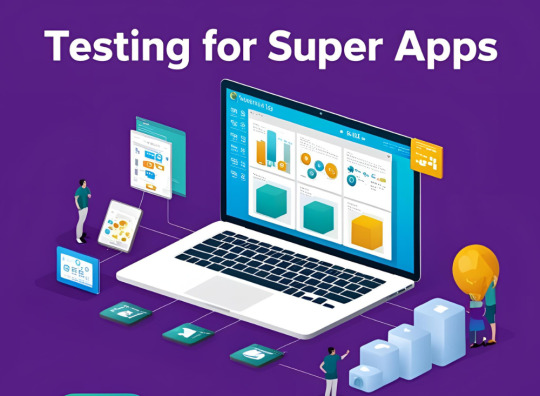
Modernizing QA with Genqe.ai AI-Powered Testing
Super Apps — integrated platforms that combine services like payments, messaging, e-commerce, booking, and social engagement — have redefined the digital experience. With high complexity and immense user expectations, these apps demand a reimagined QA strategy to ensure quality, reliability, and rapid delivery.
In 2025, the key to success lies in intelligent, scalable, and codeless automation — and that’s exactly what Genqe.ai delivers.
The QA Challenge of Super Apps
Super Apps are not typical mobile apps. They’re multi-service ecosystems with features spanning across:
Financial transactions
Social media integrations
Real-time chat
On-demand services
Loyalty and rewards programs
This complexity introduces challenges such as:
Interdependent module testing
Continuous regression across frequently updated components
UI consistency across devices and brands
High-volume test coverage with limited time
Genqe.ai: Your Smart QA Co-Pilot for Super Apps
Genqe.ai is an AI-powered, codeless test automation platform designed to keep up with the ever-evolving architecture of Super Apps. Here’s how it transforms QA strategy:
AI-Powered Test Case Generation
Genqe.ai AI analyzes application flows and auto-generates test cases for even the most complex journeys. For a super app, this includes:
User onboarding across modules
Cross-feature transaction testing (e.g., booking and payment)
Context-aware journeys like “Chat while ordering”
It continuously updates test cases as the app evolves — no manual intervention required.
Unified Functional & Visual Testing
Super Apps must function seamlessly and look consistent across screen sizes, languages, and user types. Genqe.ai combines functional and AI-driven visual testing to:
Validate core logic and UI integrity together
Detect pixel-level mismatches
Ensure responsiveness across OS and device variants
The result: a cohesive user experience across all modules.
Scalable Cross-Module Regression Testing
With Genqe.ai, teams can execute parallel tests across integrated modules and services, ensuring that updates in one area don’t break another. This is critical for:
Shared authentication systems
Centralized wallets used across services
Notifications that trigger in multiple flows
Regression testing becomes smarter, faster, and fully autonomous.
API + Microfrontend Testing in One Flow
Super Apps are powered by complex APIs and sometimes microfrontend frameworks. Genqe.ai supports:
API testing directly within the same test scenarios
Seamless validation of data exchanges across microservices
Contract testing for service agreements
This ensures robust integrations behind the scenes — without separate test suites.
Real-Time Dashboards & Smart Reporting
Genqe.ai brings transparency to test execution with intuitive dashboards. QA leaders gain:
Instant visibility into test health across modules
Smart prioritization of failed tests
Heatmaps showing defect density across app areas
This data-driven insight accelerates quality decision-making.

Real-World Use Case: One Super App, Many Journeys
Imagine a user browsing products, making a payment, chatting with support, and booking a delivery — all in one session.
With Genqe.ai, QA teams can build and validate this entire experience as a single flow, fully automated and self-healing across environments.
Conclusion: QA for Super Apps Starts with Smart Automation
Super Apps demand next-generation QA tools — and Genqe.ai delivers the speed, scalability, and intelligence needed to support multi-functional platforms. With codeless automation, adaptive test generation, and deep integration support, Genqe.ai helps teams test faster, smarter, and more reliably in 2025.
0 notes